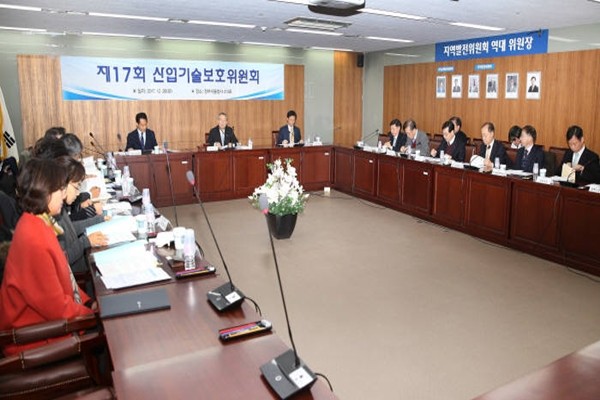South Korean Government approved LG Display’s investment that will lead to construction of Gen 8.5 OLED plant in Guangzhou, China. This will be the first time when a OLED plant of a South Korean business is going to be built in a foreign country. Based on this decision by South Korean Government, LG Display is planning to expand its OLED business towards Chinese TV manufacturers.
Ministry of Trade, Industry and Energy (MOTIE) held Industry Technology Protection Committee, which includes South Korean Government and 20 civilian committee members, at Government Complex-Seoul on the 26th and conditionally approved LG Display’s plan to take its technologies for manufacturing TV OLEDs overseas.
Until now, Industry Technology Protection Committee totaled opinions from its members based on reviews done by professional committees. However it held its first offline meeting due to the fact that technology for mass-producing Gen 8 OLEDs is being sent overseas for the first time.
Although South Korean Government gave a conditional approval, South Korean Government ordered LG Display to satisfy three of its requests such as percentage of South Korean equipment and materials used, security measures in China, and domestic investments for next-generation technologies. LG Display can maintain its investments in China only if it satisfies these three conditions.
First of all, South Korean Government ordered LG Display to use certain percentage of South Korean equipment and materials that are going to be used for Gen 8.5 OLED production line in China. Although it did not announce exact percentage, it is estimated that percentage will be around 70% when compared to current mass-production lines for large OLEDs.
South Korean Government also asked LG Display to thoroughly follow security measures so that its state-of-the-art Gen 8 OLED technologies do not get leaked. LG Display is going to strengthen its South Korean security groups and it decided to check security status of its plant in China every 6 months after establishing a task force with South Korean Government.
South Korean Government also emphasized that LG Display must carry out R&D of next-generation technologies for large OLEDs and prepare next-generation production facilities in South Korea in order to prevent its state-of-the-art technologies getting leaked from the first place.

Although South Korean Government presented many conditions, it is expected that there will not be too much concerns for LG Display to fulfill these conditions. This investment by LG Display will prepare a facility in China that is identical to the one in South Korea that mass-produces Gen 8 OLEDs. LG Display is planning to have its state-of-the-art Gen 10.5 (P10) line, which is located in Paju, as its R&D and production base for latest OLED technologies.
Considering the fact that LG Display is using most of major equipment and materials from South Korean companies for Gen 8 OLEDs, it is likely that LG Display will not have to change its business plans or carry out additional investments.
It is expected that LG Display’s investment that has been making slow progress will start to faster progress as Industry Technology Protection Committee conditionally approved LG Display’s investment plan.
LG Display decided to make investments in China for its large TV OLED business and Gen 6 flexible OLED business for mobile devices. It felt a need for mass-production by achieving golden yield from its Gen 8 OLED panel process. It will be able to lower amount of investments as it will be working with Guangzhou Government.
LG Display planned a virtuous cycle structure that will increase its sales and profits by producing OLED TV panels from China and invest those sales and profits into Gen 10.5 OLED and Gen 6 flexible OLED plants in South Korea. It is going to have production capacity about 60,000 units per month from its Gen 8.5 OLED line called ‘GP3’ in Guangzhou and it is going to invest about $4.65 billion (5 trillion KRW). It prepared unused land within its Guangzhou production corporate and has made preparation to start constructing a new plant.
LG Display will be able to prepare a steppingstone that will allow LG Display to grow OLED TV markets even quicker when it starts mass-producing Gen 8.5 OLED panels from Guangzhou. LG Display is planning to increase output of OLED TV panels from 1.7 million in 2017 to 6.5 million in 2020.
On principle, South Korean Government needs to finish screening process within 45 days excluding review period on technologies when it receives an application for an approval. There was never an incident that lasted more than 90 days even when review period was added to screening process. However in case for LG Display, decision on LG Display’s approval was delayed since it requested for an approval in July due to confliction between South Korean Government and Chinese Government and concerns about technology leaks. Although LG Display was planning to start its investment in September, it had faced difficulties as it had no choice but to wait on South Korean Government’s decision as screening process was getting delayed.
■Schedule for LG Display's investment
▲7/25: LG Display announces establishment of joint corporation for Gen 8 OLED in Guangzhou and requests South Korean Government for an approval
▲9/18: Minister Baek Woon-kyu of Ministry of Trade, Industry and Energy tells large corporations to rethink about making investments in China
▲9/19: Ministry of Trade, Industry and Energy forms a separate small committee for reviewing LG Display's investment
▲9/20: First small committee meeting
▲10/18: Second small committee meeting
▲10/30: Third small committee meeting
▲11/30: Meeting for display experts committee
▲12/26: Industry Technology Protection Committee decides on a ‘conditional approval’
Staff Reporter Bae, Okjin | withok@etnews.com